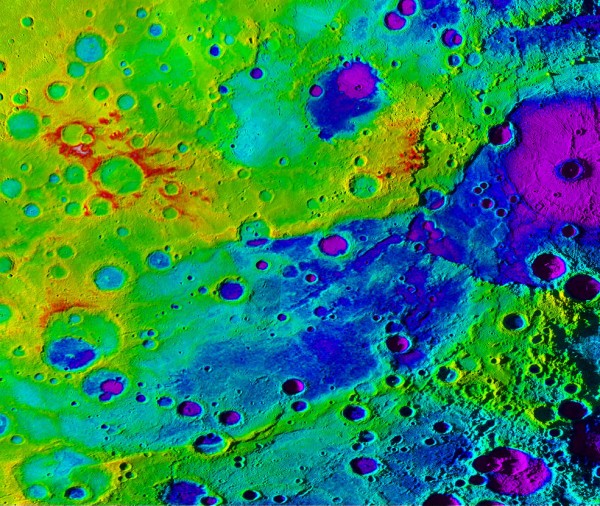By Ana Verayo, | November 18, 2016

Using colorized topography, Mercury’s “great valley” (dark blue) and Rembrandt impact basin (purple) are revealed in this high-resolution digital elevation model merged with an image. (NASA)
A new massive valley on the surface of planet Mercury has recently been discovered. Planetary scientists suggest that this feature might be the first evidence that Mercury is apparently shrinking.
An international team led by Thomas Watters from the Smithsonian Institution examined images obtained by NASA's MESSENGER spacecraft, which is now defunct, as it plunged to its death on the surface during the end of its mission. The imagery revealed a valley extending 1,000 kilometers, which is 400 kilometers wide, in the tiny planet's southern hemisphere.
Like Us on Facebook
In this new study, astronomers say that this valley exists because some of the layers of Mercury's crust have contracted and buckled.
The Earth's crust and mantle can shift around due to tectonic plates. However Mercury does not have any of these, as its lithosphere is just composed of one massive global plate that covers the entire alien planet.
Astronomers say that this was caused by Mercury's interior cooling down and contracting, making its lithosphere crumple.
This discovery is considered evidence that Mercury's surface is crumpling, suggesting that the planet closest to the sun is shrinking.
NASA's MESSENGER spacecraft successfully completed three flybys of Mercury before it was placed into a stable orbit to capture images of a basin measuring 750 kilometers known as Rembrandt. This basin is the second largest well-preserved basin in Mercury.
Astronomers describe this basin as filled with massive scarps that are estimated to be hundreds of kilometers long. Some of these scarps are considered as fault scarps and this pair of scarps form this newly discovered "Great Valley."
Watters and his team suggest that these fault scarps that traverse and surround this valley developed into newly formed towering cliffs. The floor of the valley then developed into this sinking basin around these cliffs, which was ultimately caused by the constant shrinking of Mercury.
This study was published in the journal, Geophysical Research Letters.
-
Use of Coronavirus Pandemic Drones Raises Privacy Concerns: Drones Spread Fear, Local Officials Say

-
Coronavirus Hampers The Delivery Of Lockheed Martin F-35 Stealth Fighters For 2020

-
Instagram Speeds Up Plans to Add Account Memorialization Feature Due to COVID-19 Deaths

-
NASA: Perseverance Plans to Bring 'Mars Rock' to Earth in 2031

-
600 Dead And 3,000 In The Hospital as Iranians Believed Drinking High-Concentrations of Alcohol Can Cure The Coronavirus

-
600 Dead And 3,000 In The Hospital as Iranians Believed Drinking High-Concentrations of Alcohol Can Cure The Coronavirus

-
COVID-19: Doctors, Nurses Use Virtual Reality to Learn New Skills in Treating Coronavirus Patients







